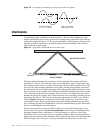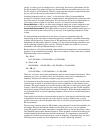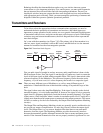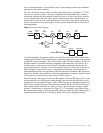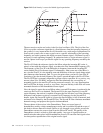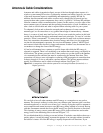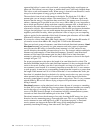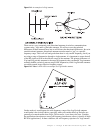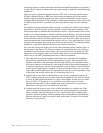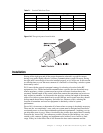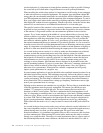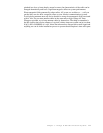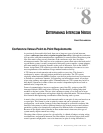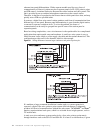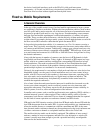108 Handbook of Intercom Systems Engineering
can greatly improve system performance and decrease harmful interference. In general, it
is a good idea to choose an antenna that is just wide enough to handle the desired operating
frequencies.
One more note on directional antennas. Because FCC rules concerning transmit power
(Effective Radiated Power or ERP) take into account the antenna gain of the transmit
antenna, high gain transmit antennas may not be used on transmitters in most wireless
communications applications. The good news is that high gain antennas on the receive side
of an RF system are also very effective for increasing system range and are commonly
used.
We reiterate one more important antenna concept. As stated in an earlier section, antenna
polarization is critical to proper system operation. Transmit and receive antennas of the
same system must be oriented in the same direction to have a proper transfer of the carrier.
In theory, if a transmit antenna is oriented vertically, thus producing a vertically polarized
carrier, and the corresponding receive antenna is oriented horizontally, the receive antenna
will not be able to see the vertically polarized wave at all. In practice, there will always be
some polarization shift in the path and the receiver will see a very small signal if it is close
enough to the transmitter, but system range will be greatly reduced. To avoid this problem,
antennas in a given RF system should always have similar orientation.
Now, lets take a brief look at the role coaxial cable (transmission line, feedline) plays in
the big picture. See Figure 7.16. Unless an antenna is attached directly to the receiver or
transmitter in an RF system, coaxial cable is the usual means used to span the gap. The
importance of choosing the right coaxial cable cannot be over-stressed. When choosing
cable to use in your RF system three main factors must be considered:
1 The cable must be properly impedance matched (correct characteristic impedance).
Most wireless systems today are 50 ohm impedance systems. That means the final
amplifier and filters in the transmitter, the front end of the receiver and both transmit
and receive antennas, are designed to work using 50 ohms as the nominal impedance. It
is extremely important to choose coaxial cable that is also 50 ohms. Coaxial cable that
is used in video applications is normally 75 ohms, not 50 ohms. Don’t ever use video
cable in RF transmit applications. An explanation of why this is bad is beyond the scope
of this book, but trust me on this one, it is a bad thing, don’t do it.
2 Consider the loss per foot of coaxial cable at your system’s operating frequency. In
VHF systems it is usually easy to select cable with acceptable loss for runs of 100 feet
or more. In UHF applications however, it gets a little tougher. See the coax loss chart
below in Table 7.1. In general, it is a good idea to never have more loss in the
transmission cable than you have antenna gain in the system. This is a good rule of
thumb that will keep you out of trouble most of the time.
3 Consider how the system is used. Is this a fixed installation, or a mobile one. If the
system is being moved frequently you want to use coaxial cable that has a stranded
center conductor. Just like other types of wire, coaxial cable with a stranded center
conductor will tolerate being flexed repeatedly without a degradation in performance.
However, this doesn’t mean you can tie a knot in the cable, or crimp it in a door and
expect it to work perfectly



